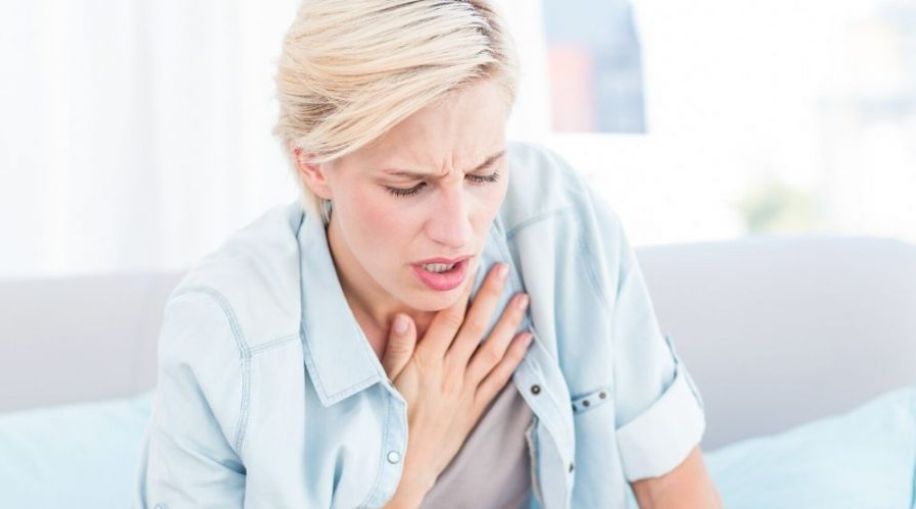Asthma Flare-up: Mild, Moderate, Severe
Asthma flare-ups can be brought on by many things, including allergens, environmental factors (air pollution or cold, dry air), exercise, certain viral infections and strong emotions. Even the air quality in your home can affect your asthma, so it's important to clean out your air ducts regularly. Learning what triggers your asthma is key for managing the condition and preventing flare-ups, which can also be treated using quick-relief medication.
Common Triggers for Allergic Asthma
- Pollen.
- Animal dander.
- Dust mites.
- Mold spores.
- Cockroach droppings.
- Air pollution.
- Tobacco smoke.
- Certain foods.
- Occupational allergens.
- Respiratory infections.
The Different Types of Asthma
There are many different variants of asthma and each have their own triggers. Here are the main types of asthma and what triggers flare-ups for each condition.
Allergic Asthma
Allergic asthma (also known as allergic rhinitis or hay fever) is triggered by exposure to certain allergens, resulting in an inflammatory response from the immune system. The release of histamines causes sneezing, a runny nose, blocked nasal passages, excess mucus, a scratchy throat and weepy eyes. Common triggers for allergic asthma include pollen, dust, animal fur, dust mites and cockroach residue.
Non-allergic Asthma
Non-allergic asthma flares up in response to non-allergic stimuli, such as cold air, tobacco smoke, exercise or viral infections. As with allergic asthma, these trigger an immune response which leads to inflammation and causes the symptoms of asthma.
Exercise-induced Asthma
This type of asthma is triggered by exercise or other physical activity. Symptoms typically begin a few minutes after exercise and may peak five to 20 minutes later. During a flare-up of exercise-induced asthma, the airways will narrow and can cause coughing and wheezing, making it difficult to breathe.
Occupational Asthma
Occupational asthma flares up in response to workplace triggers, such as irritating toxic substances or particular allergens, and usually only affects people on the job. Professions that are high risk for this type of asthma include animal grooming or breeding, hairdressing, farming, woodwork, nursing and painting.
What Is an Asthma Flare-up?
The symptoms of asthma can vary greatly from person to person and may be mild, moderate, or severe. You may have symptoms all the time, or only when you are exposed to certain triggers. When the symptoms of asthma get worse, this is known as an asthma flare-up. The symptoms of asthma that get worse include coughing, breathlessness, a feeling of tightness in the chest and wheezing. It may also be referred to as an asthma attack.
During an asthma attack, the airways can become so inflamed and narrowed that sufferers may find it difficult to breath. If the flare-up is severe, the airways can become so constricted that they stop oxygen from entering the lungs altogether. In cases such as these, an asthma attack can be fatal.
Fortunately, most asthma flare-ups can be prevented by avoiding triggers or effectively managed by using rescue medication.
What Triggers Flare-ups?
Asthma flare-ups can be caused by a variety of things depending on what type of asthma you have. Common triggers include:
- Allergens (such as pollen, dust mites, animal fur or cockroach allergens).
- Mold.
- Tobacco smoke.
- Wood smoke.
- Air pollution.
- Cold or dry air.
- Exercise.
- Severe stress or other strong emotions (these can lead to hyperventilation).
- Viral infections (cold or flu).
- Chemical irritants.
- Fragranced products and perfumes.
- Acid reflux.
- Certain foods and food additives.
What Are the Symptoms of an Asthma Flare-up?
The symptoms of an asthma flare-up can vary significantly in severity, but may include:
- Wheezing.
- Coughing.
- A feeling of tightness in the chest.
- Chest pain.
- Excess mucus.
- Breathlessness.
How Can You Manage Asthma Flare-ups?
Most of the time, you can stop an asthma attack by using quick-relief medications, such as short-acting beta-agonists. These are usually administered using an inhaler, which sprays a fine mist of droplets into the airway to help the muscles relax and the tubes widen. If your asthma flare-ups are not improved by quick-relief medications, your doctor may recommend oral steroids, which are often taken in pill form for one to two weeks in the event of asthma flare-ups.
If you have asthma, you should take care to have your medication with you at all times in case of a flare-up. However, if you get caught without your inhaler, you should take the following steps to keep your airways open until the attack passes or you can seek medical help:
- Stay calm. Panicking may lead to hyperventilation, so try to stay calm. This will make it easier to control your breathing.
- Take long, slow, deep breaths. Breathe in through your nose and out through your mouth, keeping the rhythm slow and steady to prevent hyperventilation.
- Sit up straight. Sitting upright can help to open the airways.
- Move away from the trigger. If your asthma attack is triggered by environmental stimuli (such as smoke or chemicals) move away from the source.
When Is an Asthma Flare-up Considered an Emergency?
Though most asthma flare-ups can be stopped with medication, severe attacks can be fatal without emergency medical care. Signs of a serious asthma flare-up include:
- Symptoms that do not improve (or worsen) after treatment.
- Difficulty breathing, talking or walking.
- Flaring your nostrils as you breathe.
- Bluish or grayish fingernails or lips.
- Sucking in your stomach or chest as you breathe.
- If you experience any of these symptoms, call 911 or go directly to the nearest ER for treatment.
Clearing the Air
Asthma is a very common inflammatory condition that primarily affects the airways. When exposed to a trigger, the lining of the bronchial tubes becomes inflamed and swollen, the muscles around them tighten, and the airways narrow. This restricts the flow of air in and out of the lungs, causing coughing, wheezing, pain or tightness in the chest, and difficulty breathing. A worsening of these symptoms is known as an asthma flare-up or attack and usually happens after exposure to certain stimuli (such as allergens, smoke or exercise).
In most cases, an asthma attack can be treated using quick relief medications and flare-ups can be prevented by avoiding known triggers. If the flare-up is severe or does not respond to treatment, the sufferer may require emergency medical care.
Article Resources
- Asthma and Allergy Foundation America (Asthma Facts and Figures)
- Mayo Clinic (Asthma attack)
- NCBI (Asthma)
- WebMD (Types of Asthma)
- Mayo Clinic (Occupational asthma)
- Healthline (Asthma Attack Death: Know Your Risk)
- CDC (Common Asthma Triggers)
- Healthline (Asthma Classification)
- WebMD (Asthma: the Warning Signs)
- HealthXChange.sg (How to Survive an Asthma Attack if You’re Caught Without Your Inhaler)

